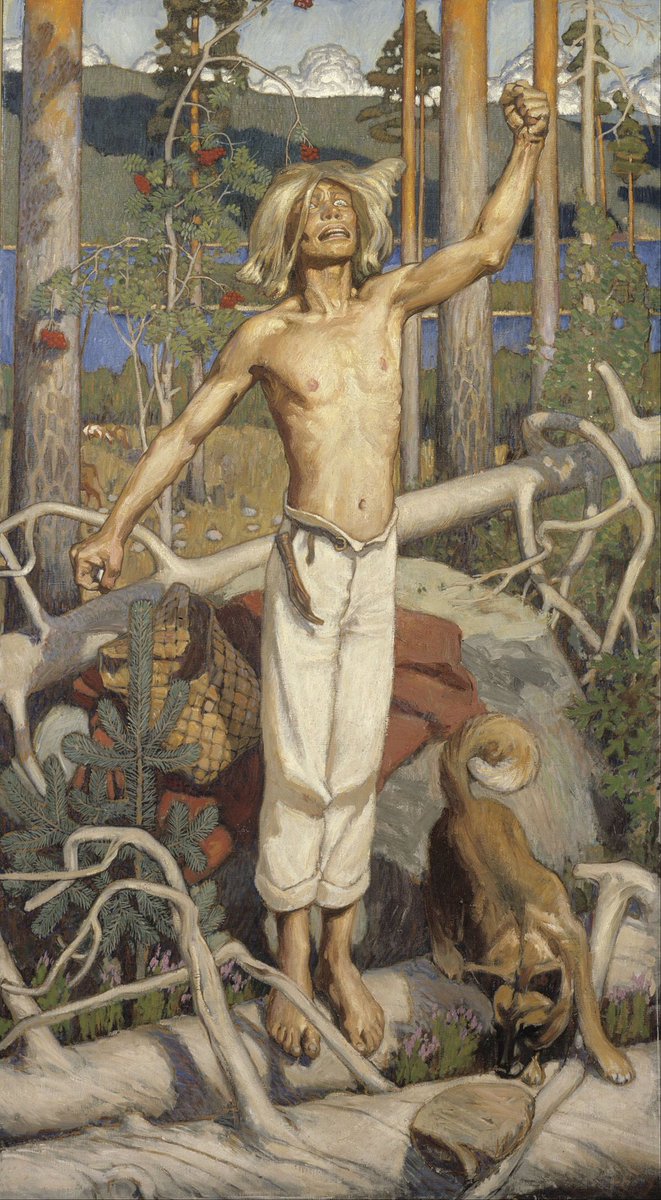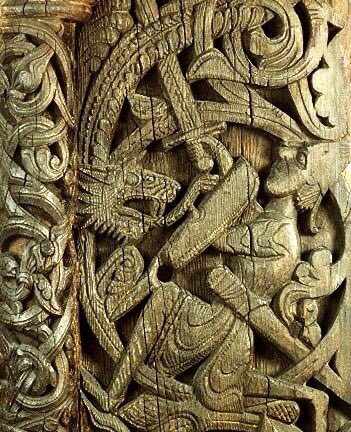Do you remember this iconic scene from Peter Jackson’s The #LordoftheRings? I think it’s visual origins go back to the early 20th century, long before #Tolkien ever thought about hobbits and Black Riders! THREAD 🧵👇 1/12
@TolkienSociety @theoneringnet @UofGFantasy @JRRTolkien
@TolkienSociety @theoneringnet @UofGFantasy @JRRTolkien

In the film, the hobbits hide away as they hear a horse approaching. They’ve found the perfect hiding spot, the root of a tree, but it’s touch-and-go! They’re nearly discovered! 2/12 

The scene seems to have come from artist #JohnHowe (who worked on the films) and reproduces exactly this specific work, initially created for the 1987 Tolkien Calendar (john-howe.com/portfolio/gall…). But Howe himself points to yet another source -some of you will have spotted it! 3/12 

And the source is @ralphbakshi’s The #LordoftheRings animated film! Howe points out that “it was the best scene in the movie” and notes that “it certainly is nowhere to be found in the Fellowship of the Ring”.
4/12

4/12


He’s absolutely right! #Tolkien’s text has Sam and Pippin hiding in a “hollow” (Merry isn’t even with them at that point), while Frodo hides *behind* the large roots of a tree, not underneath. 5/12
But I think that the idea of little people hiding under tree roots comes, in its turn, from somewhere else: celebrated artist from the Golden Age of illustration Arthur Rackham, and specifically his frontispiece for J.M. Barrie’s Peter Pan in Kensington Gardens! 6/12 

Here’s the image! The caption reads: “The Kensington Gardens are in London, where the King lives.” Here we have fairy-creatures hiding under a tree root, while a black-clad man is towering above them (the man is actually King Edward VII!). Notice the composition and framing! 7/12 

Rackham used this motif of fairy creatures hiding/residing in tree roots (not in Barrie’s text!), often with humans towering above them, multiple times in the book, as per below (I’ve selected 4 examples but there are more!) 8/12 







And he continues using it again and again later in his illustrations for Undine, A Midsummer Night’s Dream, his Book of Pictures, etc. (again, here are only 4 examples): 9/12 







Given Bakshi’s stated admiration for Rackham and the similarities here, I think we can trace a chain of visual influence from Rackham, to Bakshi, to Howe, and eventually to Jackson. 10/12 







Which is just as well, as Tolkien himself was favourable to Rackham’s art as a visual model for a film: “Rackham rather than Disney”, he wrote in a letter in 1957! 11/12 

A more detail write up of this thread (with sources and more images) can be found on my blog here:
dimitrafimi.com/2021/08/03/tol…
OVER AND OUT!
12/12
dimitrafimi.com/2021/08/03/tol…
OVER AND OUT!
12/12
@UnrollHelper please
• • •
Missing some Tweet in this thread? You can try to
force a refresh






























